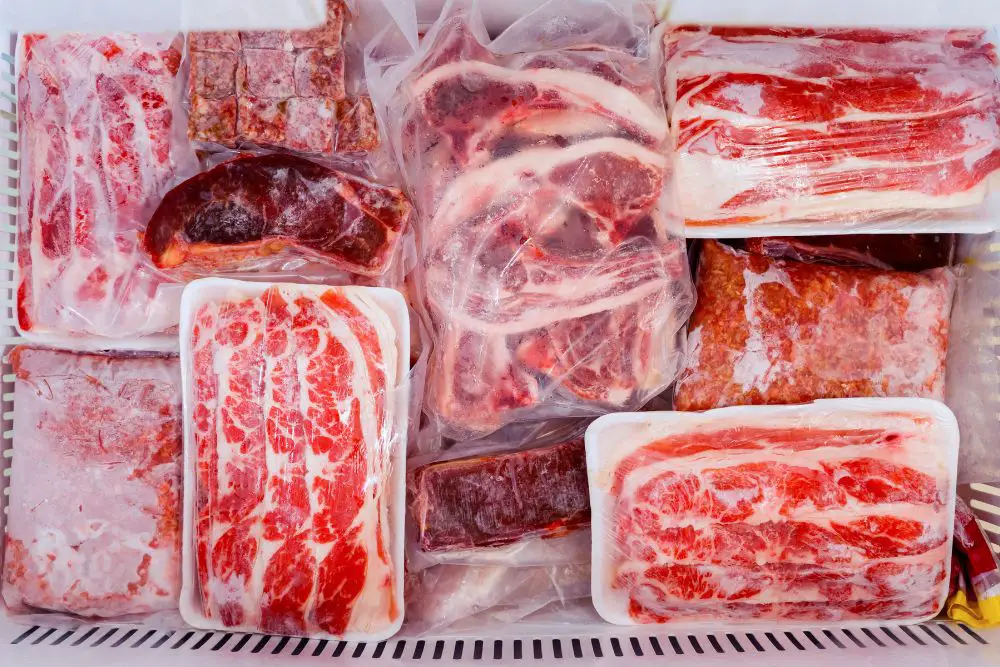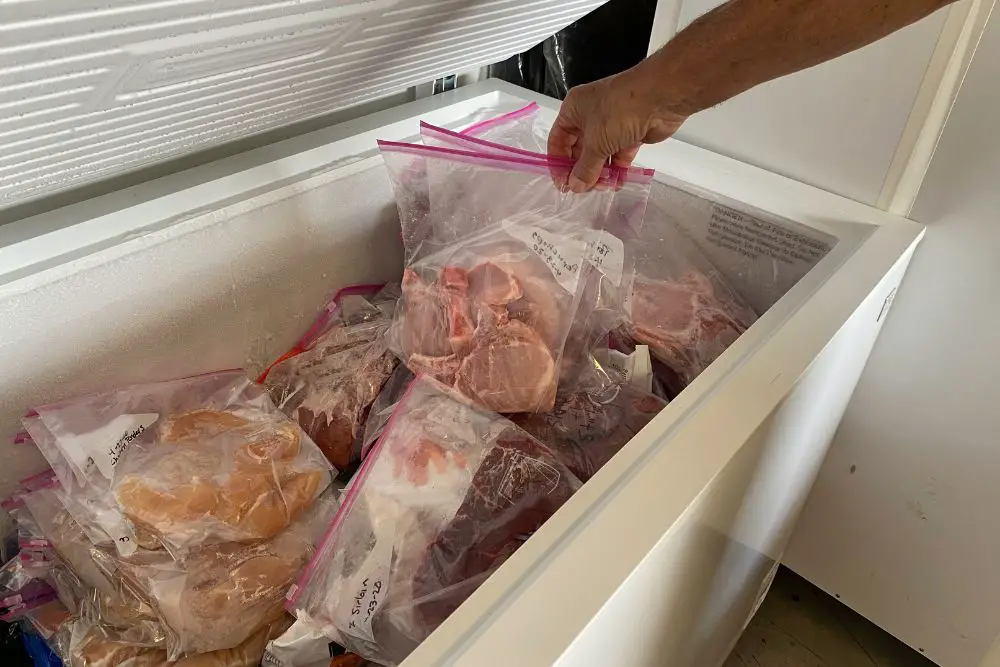You will need 8-10 cubic feet of freezer space to store half a cow's worth of beef, or between 227 and 290 litres. One cubic foot can fit 35-40 pounds of meat and a half cow is 180-280 pounds.
A live animal weighs 900 to 1,400 pounds. When a cow is slaughtered the hanging weight is about 40%.
This equates to:
- The Take-home weight for a whole cow is 360 to 560 pounds of beef
- Half beef is 180-280 pounds
- Quarter beef is 90-190 pounds
Table of Contents
The Right Size Freezer
When buying half a cow’s worth of beef you need to figure out the right size of the freezer you’ll need for all that meat. The freezer to choose will depend on how much space you have and the type of freezer you want (chest or upright).
The right size freezer for half a cow is 8-10 cubic feet (227-290 liters). If you’ll be restocking your beef before the previous batch runs out, then you should get a freezer that’s slightly larger than the recommended size.
Chest Freezer vs. Upright Freezer
The main difference between a chest freezer and an upright freezer is the design which determines how you’ll organize your beef.
Chest freezers are horizontal so they take more space but offer more storage space. These deep freezers are energy efficient and they can keep your beef frozen for a few days when there is no power. This is the most ideal deep freezer for anyone who purchases meat in bulk.

Upright freezers take less space but have less storage space. Standing freezers have partitions so they are easier to organize but you have to cut the beef into small sizes first.
Best Way To Organize The Freezer
An appropriately sized freezer will ease the process of organizing your freezer. There are things you can do to keep things organized and accessible.
The first thing is to keep similar items together. When buying beef you will get different cuts (more on this later) and sizes. Keep similar cuts together to easily access them when needed. For example, you might want to store the steaks and roasts in one area and then separate that from ground beef or stew meat.

It’s also important to consider packaging when organizing your freezer. Here are some options for packaging your meat:
- Airtight containers: A good example of airtight containers is Tupperware. These containers prevent freezer burn but they take up extra space.
- Freezer paper: A bit costly but also another good choice for meat storage and they don’t take much freezer space like containers.
- Vacuum seal: Another good option for storing meat but you have to buy vacuum plastic bags and a vacuum seal machine.
- Plastic wrap: A cheap option that takes less space but is easy to tear.
Before you package your beef cuts ensure they’re dry and clean. It’s also important to label your packages so you can easily identify what’s inside.
Beef Cuts and Sizes
There are three types of beef cuts, primal, sub-primal, and portion cuts.
Primal cuts are the main cuts of beef and they include:
- Flank: a popular beef cut located behind the short plate and below the loin
- Rib: this primal cut comes from the last six ribs and backbone. Rib cuts have tender fat and a distinctive flavor
- Round: a tough cut located near the back legs and it’s one of the leanest cuts
- Short Plate: a fatty and tough cut from the cow’s ribs
- Shank: the toughest cut located at the forearm
- Loin: a very tender cut located behind the ribs. Loin cuts are of two types: short loin and sirloin. The short loin is the most tender and it’s found in the hindquarters. Sirloin is less tender and it’s located near the rear legs.
- Brisket: a tough fatty cut from a cow’s breast.
- Chuck: an inexpensive but flavorful cut from the shoulder and neck
Sub-primal cuts are derived from primals so they’re smaller in size.
Here is a list of sub-primal cuts from each primal cut:
- Flank: flank steak which is also known as plank steak or London broil
- Rib: ribeye roll (ribeye steaks and ribeye roasts) and rib sub-primal which includes short ribs and back ribs
- Round: bottom round, top round, eye of round, and sirloin tip
- Short Plate: plate short ribs, hanger steak, inside skirt steak, outside skirt steak, and flanken-style short ribs
- Shank: shank cross-cut
- Loin: tenderloin, short loin, and strip loin
- Brisket: brisket point half and brisket flat half
- Chuck: chuck tender, chuck roll, square-cut chuck, and shoulder clod
Portion cuts are the smallest cuts and are from sub-primal cuts. These secondary cuts of meat include sirloin steak, filet mignon, t-bone, and porterhouse steak.
Primal cuts are big in size so they are ideal for commercial freezers and cold rooms. Sub-primal and portion cuts are smaller and weigh 1-10 pounds so they are easy to store in home freezers.
How Long Does Frozen Beef Last?
Uncooked frozen beef can last up to 12 months if it’s properly stored in a freezer. The USDA states that frozen food can remain safe indefinitely if it’s properly packaged and the freezer’s temperature is constant.
Uncooked roasts, chops, and steaks can last 4 to 12 months. Uncooked ground beef can last 3 to 4 months. The quality of meat deteriorates over time due to frequent opening and closing of the freezer door, temperature fluctuations, and exposure to light.
The best way to maintain the quality of frozen beef is to keep it in a freezer that’s set at 0 degrees Fahrenheit or minus 18 degrees Celcius.
